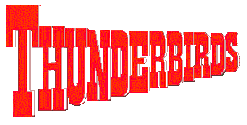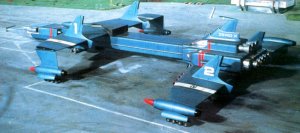
An A.P. Films Production in association with A.T.V. for ITC World Wide Distribution
Production Team
'THUNDERBIRDS' followed on from Gerry Anderson's earlier Supermarionation successes 'FIREBALL XL5' and 'STINGRAY'. Inspiration for the series came from a real life disaster when a group of German miners were trapped in a mine shaft - the frantic efforts to rescue them captured the attention of Gerry and much of Europe.
The TV series was set in the year 2026 but this later caused problems for the comic TV21 which revised the date to the year 2065. This enabled the comic strips to run along side Stingray (2065) and Captain Scarlet and the Mysterons (2068). Thunderbirds and Captain Scarlet were the only Gerry Anderson Series to carry any links, the Mars explorer 'Zero X' featured in Thunderbirds Are Go! is involved in the first encounter with the Mysterons on Mars.

Initially to be called 'International Rescue' the series was eventually named after Thunderbird Field, an airfield in the US where Gerry's brother learned to fly for the RAF during World War 2. Gerry's only brother, Lionel Anderson, was killed in action during WW2. The rescue craft for the series were originally to be called Rescue 1, Rescue 2 etc...
A budget of 22,000 pounds was set for each episode (the equivalent of 500,000 pounds today) and production began in 1964. After viewing the first half-hour episode, ITC executive (Sir) Lew Grade instructed Gerry to extend each episode to fill a one-hour time slot. As production for the series was already well underway with nine episodes almost completed, this meant a massive undertaking for the AP Productions team at Slough Studio to extend each episode and still have them finished on time. Ironically, for the US, episodes were later broken into half-hour shows with a cliff-hanger ending for the first half, then a one-minute recap at the beginning of the second half of the episode.
Many of the production team that Gerry had used on the earlier series stayed on for Thunderbirds, including specials effects maestro Derek Meddings, producer Reg Hill, chief puppeteer Christine Glanville, composer Barry Gray and Sylvia Anderson.
Supposedly Jeff Tracy's sons were named after the first 5 American astronauts into space via the Mercury space project, Scott Carpenter, Virgil Grissom, Alan Shepard, Gordon Cooper and John Glenn. But Gordon Cooper wasn't the 5th into space, Walter M. Schirra Jr was. So what happened to Walter Tracy?
The series was a huge success and led to the production of the full feature motion picture 'THUNDERBIRDS ARE GO! The movie and a budget of 250,000 pounds allowed the team to go even further with the special effects that had become synonymous with the names Gerry Anderson and Derek Meddings. It premiered at the London Pavilion, Piccadilly Circus on Monday 12th December 1966, in a charity event for Barnardo's, but despite rave reviews and a huge merchandising campaign the movie never echoed the success of the TV series. It did however, pave the way for a second movie titled 'THUNDERBIRD 6'. The second movie was more in the mould of the TV series and concentrated on the International Rescue craft and characters. But again success eluded Gerry and 'THUNDERBIRD 6' at the box office.
THUNDERBIRD 6 featured one of the most intricate shots ever produced for the Supermarionation series when Thunderbirds 1, 2 and 6 along with FAB1 travel in convoy. A set was specially constructed and ran the length of the Slough studio floor.
One of the most debated aspects of the series and movies was the saying "F.A.B.". First spoken by Virgil Tracy in "Trapped in the Sky" it was another Anderson acronym, but unlike others what it stood for was never divulged. Later Gerry explained that it was simply an abbreviation for the word "FABulous" that was popular at the time.
Supermarionation was a word coined by Gerry Anderson combining the words "Super", "Marionette" and "Animation". Gerry's later series "Terrahawks" was filmed in Supermacromation as it utilised new form of puppetry based on a sophisticated form of glove puppets.
